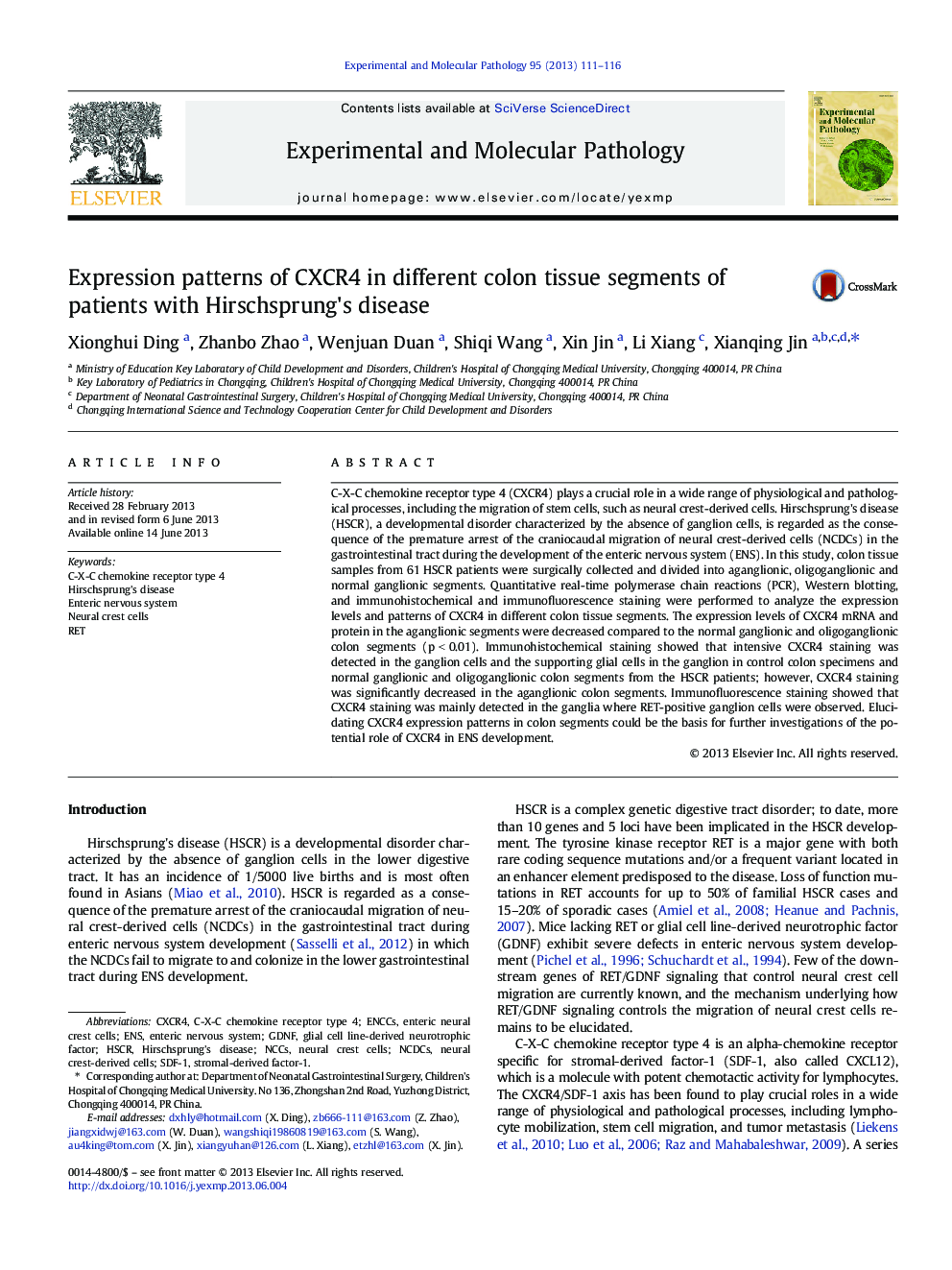| Article ID | Journal | Published Year | Pages | File Type |
|---|---|---|---|---|
| 2775331 | Experimental and Molecular Pathology | 2013 | 6 Pages |
•Low CXCR4 expression was observed in the aganglionic segments of the HSCR patients.•Intensive CXCR4 staining was detected in the ganglion of the colon specimens.•CXCR4 staining was detected in RET-positive ganglion cells in the colon specimens.
C-X-C chemokine receptor type 4 (CXCR4) plays a crucial role in a wide range of physiological and pathological processes, including the migration of stem cells, such as neural crest-derived cells. Hirschsprung's disease (HSCR), a developmental disorder characterized by the absence of ganglion cells, is regarded as the consequence of the premature arrest of the craniocaudal migration of neural crest-derived cells (NCDCs) in the gastrointestinal tract during the development of the enteric nervous system (ENS). In this study, colon tissue samples from 61 HSCR patients were surgically collected and divided into aganglionic, oligoganglionic and normal ganglionic segments. Quantitative real-time polymerase chain reactions (PCR), Western blotting, and immunohistochemical and immunofluorescence staining were performed to analyze the expression levels and patterns of CXCR4 in different colon tissue segments. The expression levels of CXCR4 mRNA and protein in the aganglionic segments were decreased compared to the normal ganglionic and oligoganglionic colon segments (p < 0.01). Immunohistochemical staining showed that intensive CXCR4 staining was detected in the ganglion cells and the supporting glial cells in the ganglion in control colon specimens and normal ganglionic and oligoganglionic colon segments from the HSCR patients; however, CXCR4 staining was significantly decreased in the aganglionic colon segments. Immunofluorescence staining showed that CXCR4 staining was mainly detected in the ganglia where RET-positive ganglion cells were observed. Elucidating CXCR4 expression patterns in colon segments could be the basis for further investigations of the potential role of CXCR4 in ENS development.
